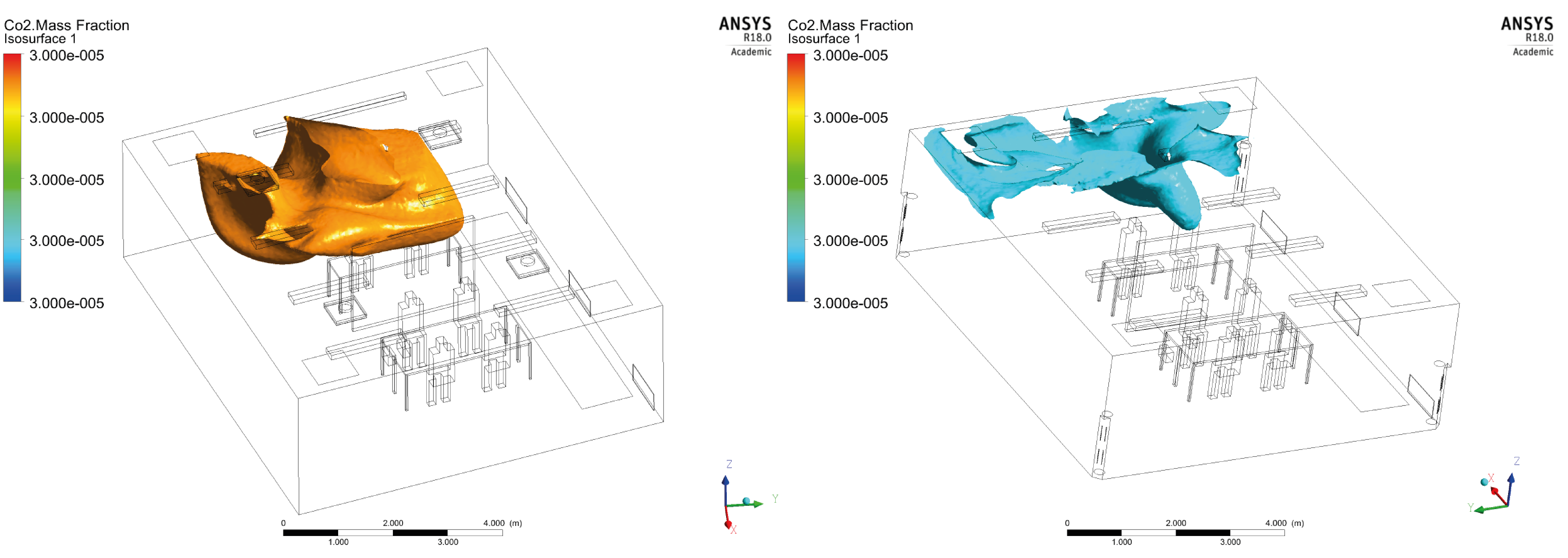Do you breathe the air of your colleagues?
Where does the air of your colleagues go?
How effective is really the ventilation in our workspaces?
It is already known that effective ventilation prevents airborne infection. But to get further answers and knowledge of where the exhaled air goes in an office, we performed a lots of lab measurements and verified CFD simulations (together with the University of Gävle).
Download and read the report here: CRE study (pdf)
Summary of the results from different measurements / simulation with mixed ventilation:
- The exhaled air spread relatively evenly throughout the volume of the room
- The measured concentration at each workplace may vary depending on the position in the room
- At some of the workplaces (3, 5 and 6), the measured amount of the exhaled air was higher than the room average => at these workplaces, the ventilation in fact produced the inverse function: it served to distribute the contaminated air rather than remove it.
Summary from various measurements with InventiAir’s products:
- The concentration of exhaled air was significantly lower around all workplaces. Only 1/3 of the concentration was measured on average compared to the mixing/conventional ventilation
- This means that InventiAir’s way of ventilating the workplaces was 3 times more efficient at removing the contaminated exhaled air
- A higher concentration of exhaled air was found in other parts of the room, in particular where there are typically no people, such as at ceiling level
MovieWe at InventiAir explain and develop the results from the measurements
Movie… Or a much simpler explanation from us
Conclusion: The measurements confirm that a good ventilation flow in the room mixes the contaminants. They also state that the risk of inhaling contaminated and polluted air can be further reduced, with an optimized distribution of the air in the room.
The European industry association (REHVA) and the Swedish industry association (Svensk Ventilation) emphasize the importance of efficient ventilation. Something we fully support. However, we would like to emphasize that the efficiency of ventilation van vary, as has been shown by the results above.
“REHVA also explains why the concentration of small virus particles is relatively constant throughout the room where a carrier is present, and that this allows conventional ventilation to effectively dilute and remove them.”
Read MoreREHVA COVID-19 GUIDANCE
Read MoreWhy you get sick in an airplane cabin (TED Talk)
Read MoreHow Coronavirus Infected Some, but Not All, in a Restaurant
The explanation for why the results differ:
- Optimized distribution of the new clean air
- Less used old air is mixed back and recycled
- The ventilation employs the natural air flow from heat sources in the room

Picture above: Visualizations of CFD simulations with spread of contamination with mixing technology (orange) and InventiAir’s optimized air distribution (blue). The contamination is distributed to the exhaust air (InventiAir) instead of spreading to the workplace next door.
“For us in InventiAir, it is a matter of course that pollution and contamination should not be helped by the ventilation to spread around different types of premises. This applies to all types of premises, such as offices, schools, hospitals, homes, etc., regardless of the requirements for cleanliness. Conventional ventilation has as a strategy to “mix” the new air with the old, so that a form of “dilution effect” of contamination and pollution occurs. It is far from optimal from an energy point of view and it is definitely not optimal from a health perspective!” – Martin Sellö
